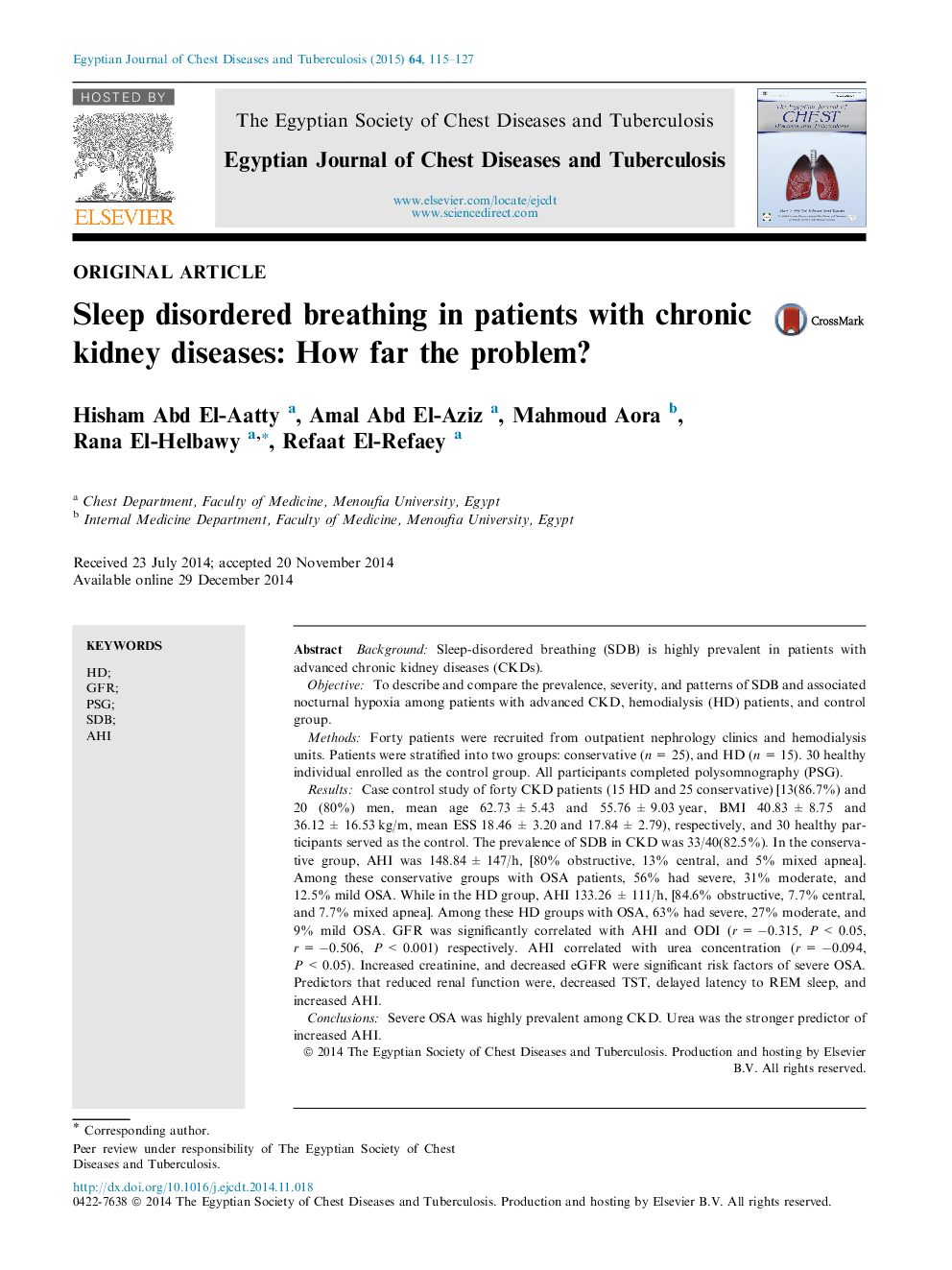| Article ID | Journal | Published Year | Pages | File Type |
|---|---|---|---|---|
| 3400095 | Egyptian Journal of Chest Diseases and Tuberculosis | 2015 | 13 Pages |
BackgroundSleep-disordered breathing (SDB) is highly prevalent in patients with advanced chronic kidney diseases (CKDs).ObjectiveTo describe and compare the prevalence, severity, and patterns of SDB and associated nocturnal hypoxia among patients with advanced CKD, hemodialysis (HD) patients, and control group.MethodsForty patients were recruited from outpatient nephrology clinics and hemodialysis units. Patients were stratified into two groups: conservative (n = 25), and HD (n = 15). 30 healthy individual enrolled as the control group. All participants completed polysomnography (PSG).ResultsCase control study of forty CKD patients (15 HD and 25 conservative) [13(86.7%) and 20 (80%) men, mean age 62.73 ± 5.43 and 55.76 ± 9.03 year, BMI 40.83 ± 8.75 and 36.12 ± 16.53 kg/m, mean ESS 18.46 ± 3.20 and 17.84 ± 2.79), respectively, and 30 healthy participants served as the control. The prevalence of SDB in CKD was 33/40(82.5%). In the conservative group, AHI was 148.84 ± 147/h, [80% obstructive, 13% central, and 5% mixed apnea]. Among these conservative groups with OSA patients, 56% had severe, 31% moderate, and 12.5% mild OSA. While in the HD group, AHI 133.26 ± 111/h, [84.6% obstructive, 7.7% central, and 7.7% mixed apnea]. Among these HD groups with OSA, 63% had severe, 27% moderate, and 9% mild OSA. GFR was significantly correlated with AHI and ODI (r = −0.315, P < 0.05, r = −0.506, P < 0.001) respectively. AHI correlated with urea concentration (r = −0.094, P < 0.05). Increased creatinine, and decreased eGFR were significant risk factors of severe OSA. Predictors that reduced renal function were, decreased TST, delayed latency to REM sleep, and increased AHI.ConclusionsSevere OSA was highly prevalent among CKD. Urea was the stronger predictor of increased AHI.
